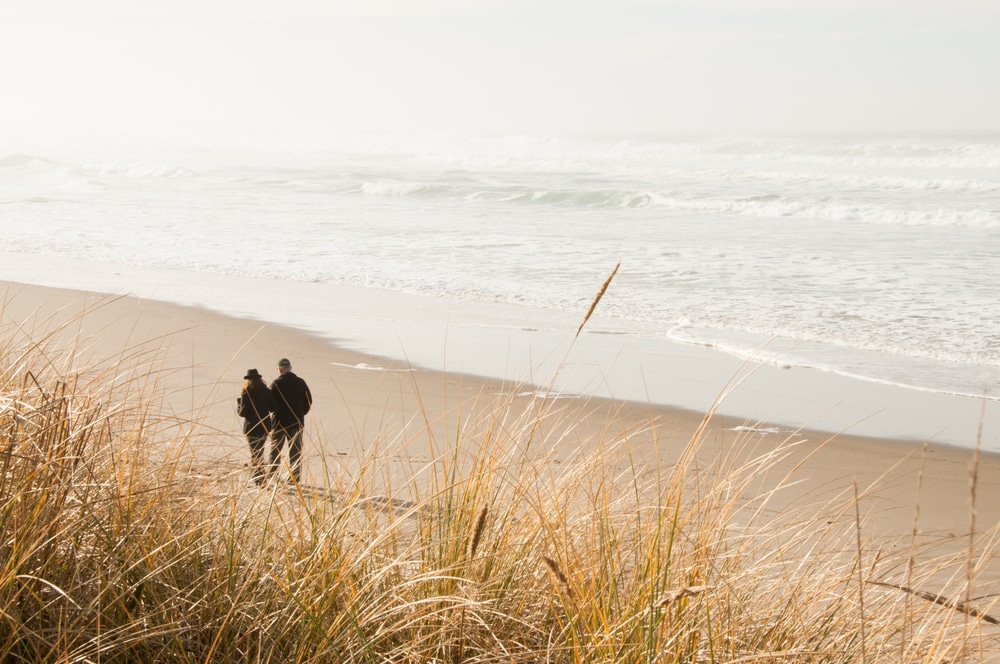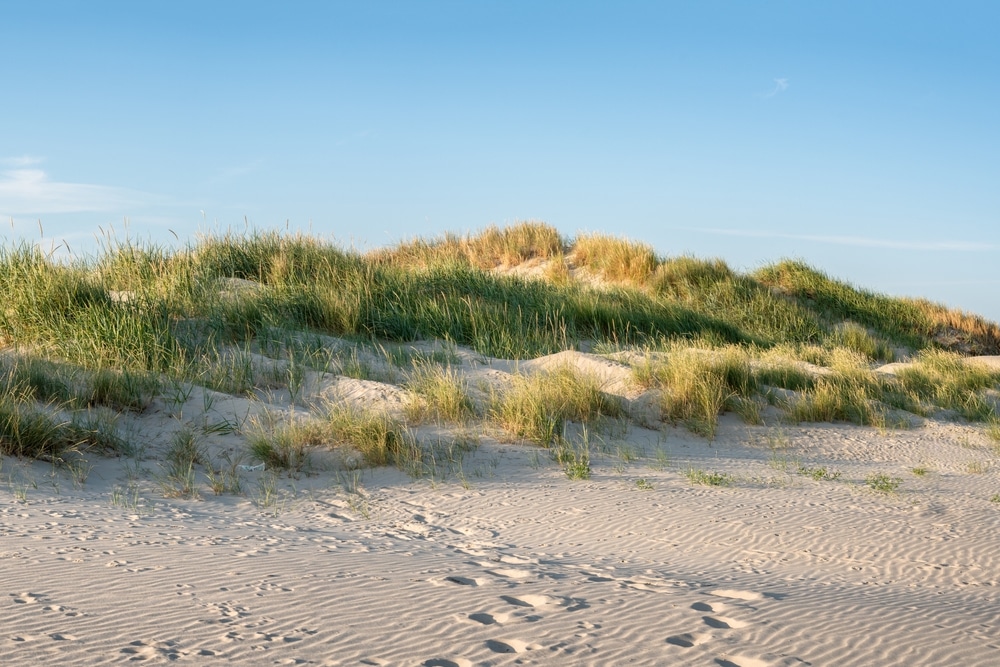Beach grasses are common in coastal areas around the world. There are two main types of beach grasses in the US, American and European varieties. Both kinds of grass have long, narrow leaves and taproots that help anchor the plants in sand or loose soil. These grasses are found in coastal areas, typically grow in clumps, and can reach up to three feet tall.
Beach grasses thrive in sandy soil and are essential for stabilizing dunes and preventing erosion. They help protect coastal areas from storms and provide habitat for wildlife. Beach grasses can be planted by hand or with a seed drill machine. Once established, they require little maintenance.
Let’s look at the common varieties of beach grasses and how to identify them!
American beach grass

American beach grass has the botanical name Ammophila breviligulata and is the most common type of coastal grass in the US. It’s also referred to as American marram grass and is found growing along the East Coast, from Maine to Florida. It’s also prevalent along the coast of the great lakes.
This variety of beach grass has a deep root system that helps it withstand strong winds and salt spray. It’s a hardy plant that can tolerate sandy soil, hot weather, and some shade. The plant grows between 1 to 3 feet tall, and the foliage has a silvery-green hue. American beach grass is distinguishable from other varieties as the leaves have a rough surface but are smooth underneath.
The flowers are small and white, blooming in late summer. Marram grass spreads via rhizomes and is fast-growing. In some areas, it is considered invasive. The grass can survive in areas where the sand regularly shifts and buries the plant.
European beach grass
European beach grass, also known as Blue Lyme Grass, has the botanical name Elymus arenarius. It’s a semi-evergreen grass native to Europe, Asia, and Africa. This variety of beach grass was introduced to the US in the 1800s for erosion control. It is now found along the West Coast, from California to Washington. European beach grass has a shallow root system and does not tolerate salt spray as well as American beachgrass.
European beach grass grows in dense mats and can reach up to 2 feet tall. The leaves are 3 to 6 inches long and have a blue-green hue. The flowers are small and brown, blooming in late summer.
How to tell the difference between beach grasses
The easiest way to tell the difference between these two types of beach grass is by their root systems. American beachgrass has a deep root system, while European beachgrass has a shallower root system.
You can also identify the plants by the color and texture of the leaves. American beachgrass has silvery-green leaves, while European beachgrass has blue-green leaves. The leaves of the European variety are smooth, while American beach grass is rough on the outer side of the leaf.
American beachgrass is more common on the East Coast, while European beachgrass is more common on the West Coast.
Conclusion
No matter what type of beach grass you have in your coastal area, they are both important for stabilizing sand dunes and preventing erosion. These plants are easy to care for and require little maintenance once they are established.
If you live in a coastal area, consider planting beach grasses to help protect your community from erosion and storms.
